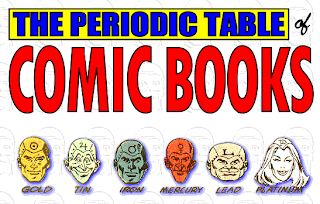A few years ago my brother in-law Dr. Nathan Hnatiuk who teaches Organic Chemistry at Cedarville University shared this fun organic chemistry rap video on his Facebook page. It popped-up again in my “Facebook memories” so I thought it was worth passing along again. The video is embedded below.
On a related note, here are five resources for helping students learn the Periodic Table.
 Glaxo Smith Kline’s Active Science offers fifteen interactive games covering a range of science topics. The Interactive Periodic Table is a game designed to help chemistry students practice identification of the elements. To play the game students are given some clues about an element’s properties. Using those clues the student has to place the element in the correct place on the table.
Glaxo Smith Kline’s Active Science offers fifteen interactive games covering a range of science topics. The Interactive Periodic Table is a game designed to help chemistry students practice identification of the elements. To play the game students are given some clues about an element’s properties. Using those clues the student has to place the element in the correct place on the table.
The Elements is an interactive periodic table on which students can click an element and learn about that element. Clicking on an element describes all of the element’s properties and the common uses of that element. If students just need a snap shot of information, simply placing their cursor on an element reveals a snap shot of information at the top of the page.
 The Periodic Table of Videos is produced by The University of Nottingham. The table features a video demonstration of the characteristics of each element in the table. Each element in the Periodic Table displayed on the home page is linked to a video. The videos are hosted on YouTube, but don’t worry The University of Nottingham provides an alternative server through which you should be able to view the videos.
The Periodic Table of Videos is produced by The University of Nottingham. The table features a video demonstration of the characteristics of each element in the table. Each element in the Periodic Table displayed on the home page is linked to a video. The videos are hosted on YouTube, but don’t worry The University of Nottingham provides an alternative server through which you should be able to view the videos.
 The Periodic Table of Comic Books is a project of the chemistry department at the University of Kentucky. The idea is that for every element in the Periodic Table of Elements there is a comic book reference. Clicking on an element in the periodic table displayed on the homepage will take visitors to a list and images of comic book references to that particular element. After looking at the comic book reference if visitors want more information about a particular element they can find it by using the provided link to Web Elements.
The Periodic Table of Comic Books is a project of the chemistry department at the University of Kentucky. The idea is that for every element in the Periodic Table of Elements there is a comic book reference. Clicking on an element in the periodic table displayed on the homepage will take visitors to a list and images of comic book references to that particular element. After looking at the comic book reference if visitors want more information about a particular element they can find it by using the provided link to Web Elements.
The Dynamic Periodic Table is a good resource for science teachers and their students. The Dynamic Periodic Table works like this, click on an element and a window will pop up to tell you more detailed information about that element. The pop up windows cover properties, orbitals, isotopes and more. There are even links to more information, like the history of each element, for each element. If this had been around when I took chemistry, I might have done a little better.










